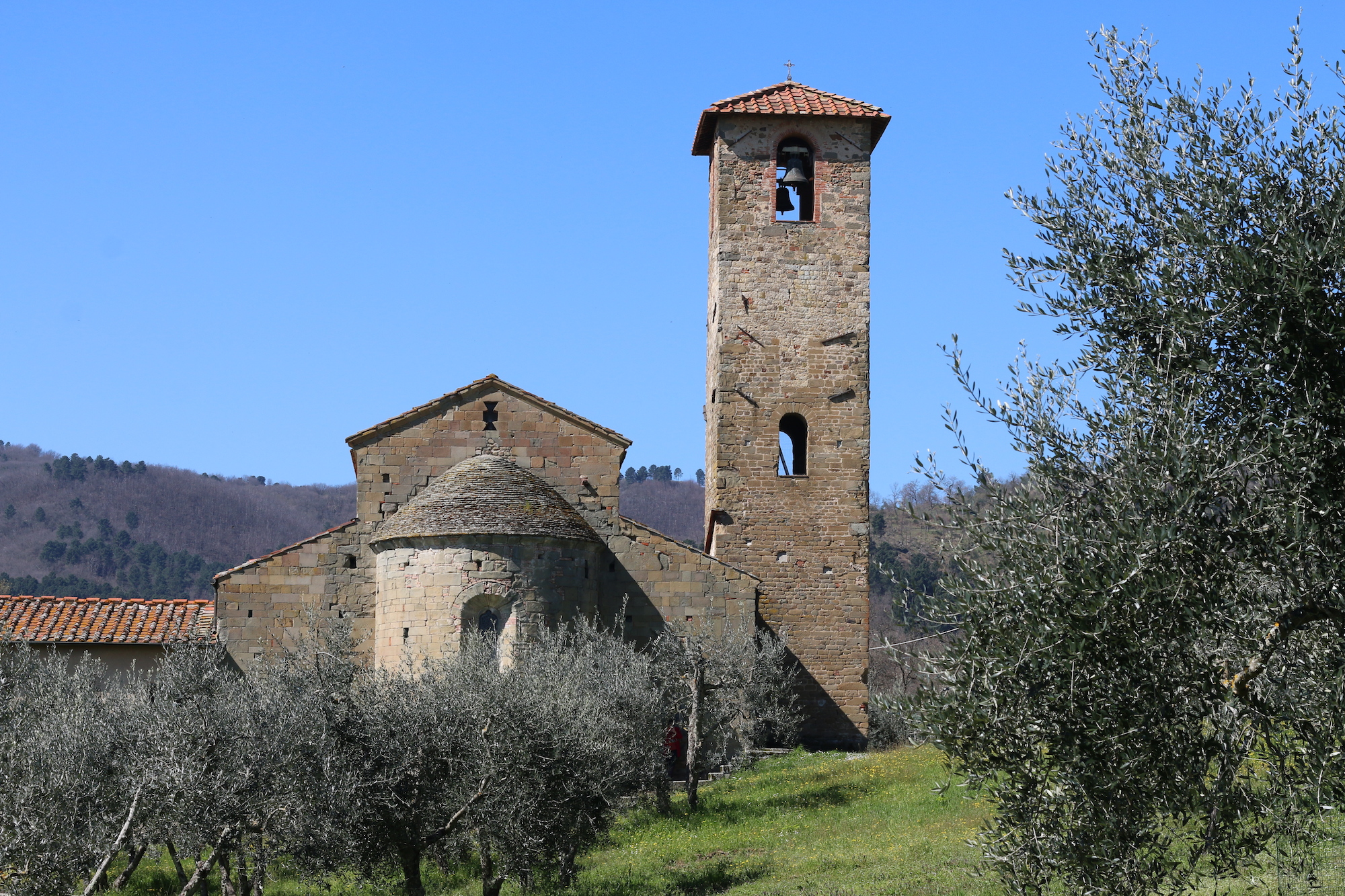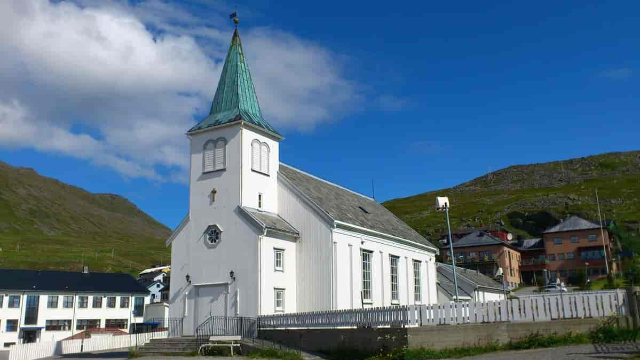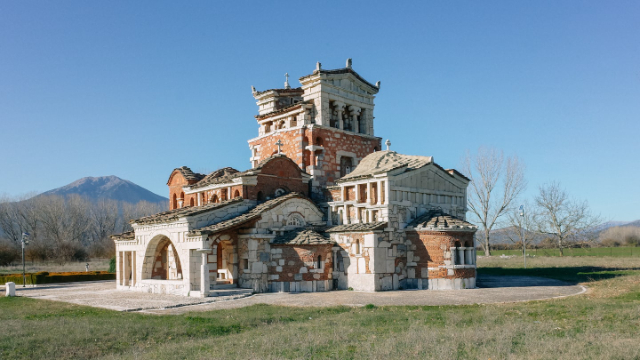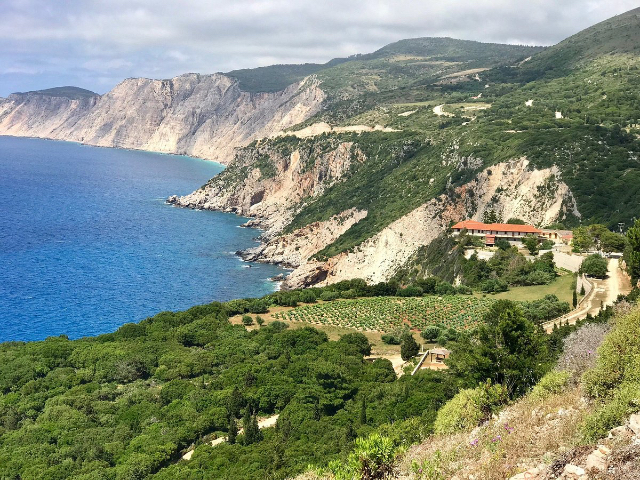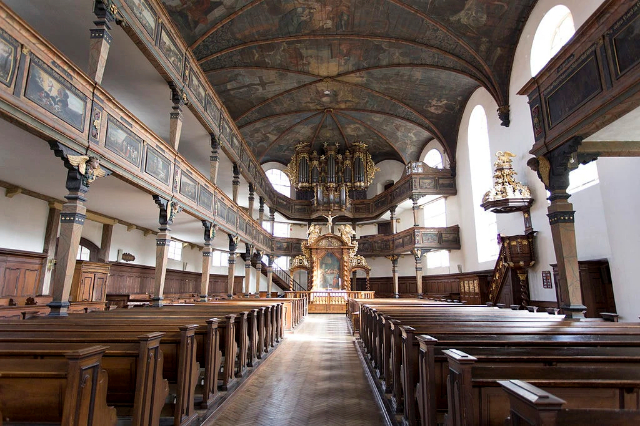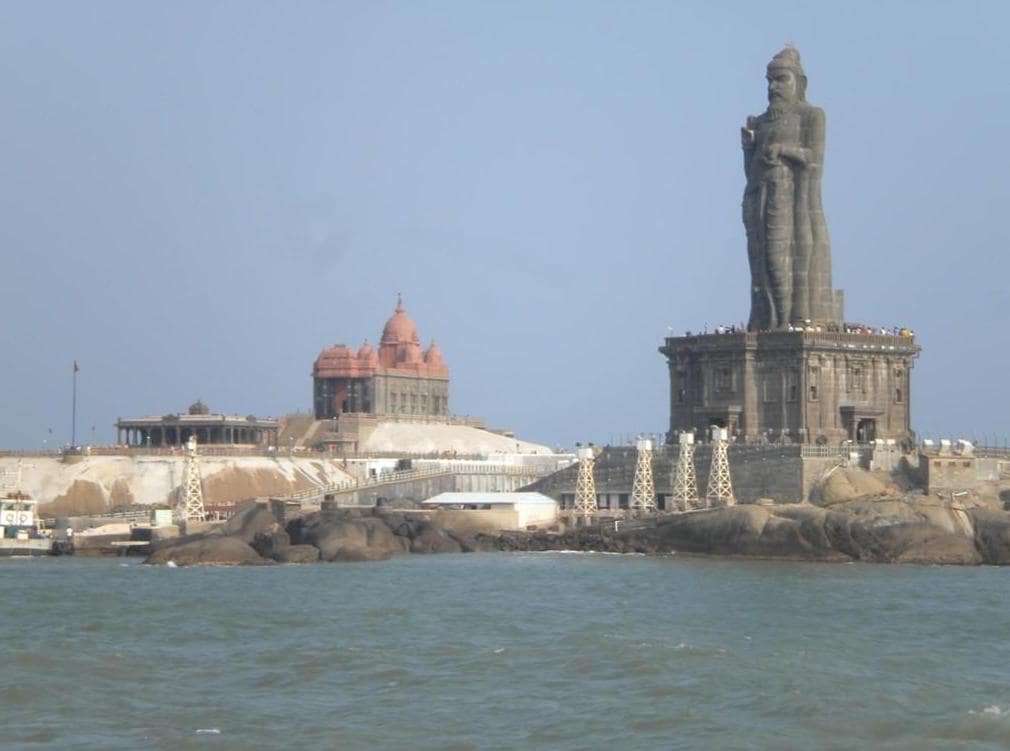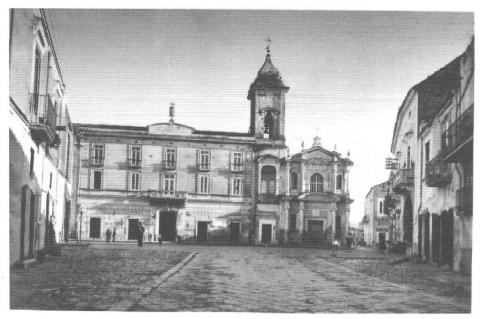The parish church of San Romolo a Gaville, built between 1007 and 1070, is located outside the layout of the Romanesque parish churches of Valdarno located on the Setteponti road, but on a beautiful hill of Figline Valdarno, on the slopes of Chianti, where once passed the Cassia Adrianea that led from Valdambra to Florence.
In the Middle Ages it was part of an important castle of the Ubertini, a Ghibelline family that brought Gaville into the fight with the Guelphs and for this reason it was mentioned by Dante Alighieri in the fifteenth canto of the Inferno of the Divine Comedy. In the eighteenth century it underwent profound transformations and only after the damage of the Second World War was it carefully restored with patient work that lasted from 1947 to 1968.The facade of the church is distinguished by its simplicity: there is a door surmounted by a lunette and, at the top, a mullioned window. Inside the church, from the single apse there are three naves divided by square pillars and round arches, the roof is supported by wooden trusses, while the floor is divided into several levels. Towards the façade, the pillars are replaced by sandstone columns, with figured capitals alternating phytomorphic motifs with illustrations taken from sacred texts or on the creation of the world. In the left aisle there is an Annunciation by the school of Ghirlandaio (15th century), while in the right aisle there is a fresco once placed in the lunette of the façade, a work of the Sienese school of the early 15th century, as well as a large canvas depicting St Michael the Archangel, by the Florentine school (18th century). Next to the parish church there is a rural complex dating back to the fifteenth century, the current seat of the Museum of Rural Life.
